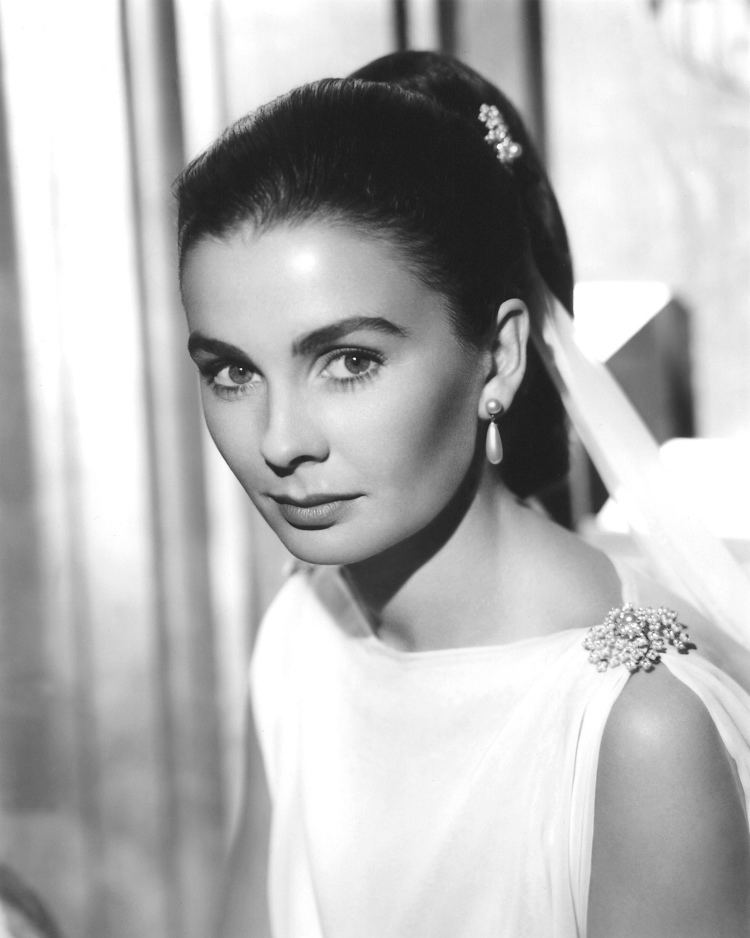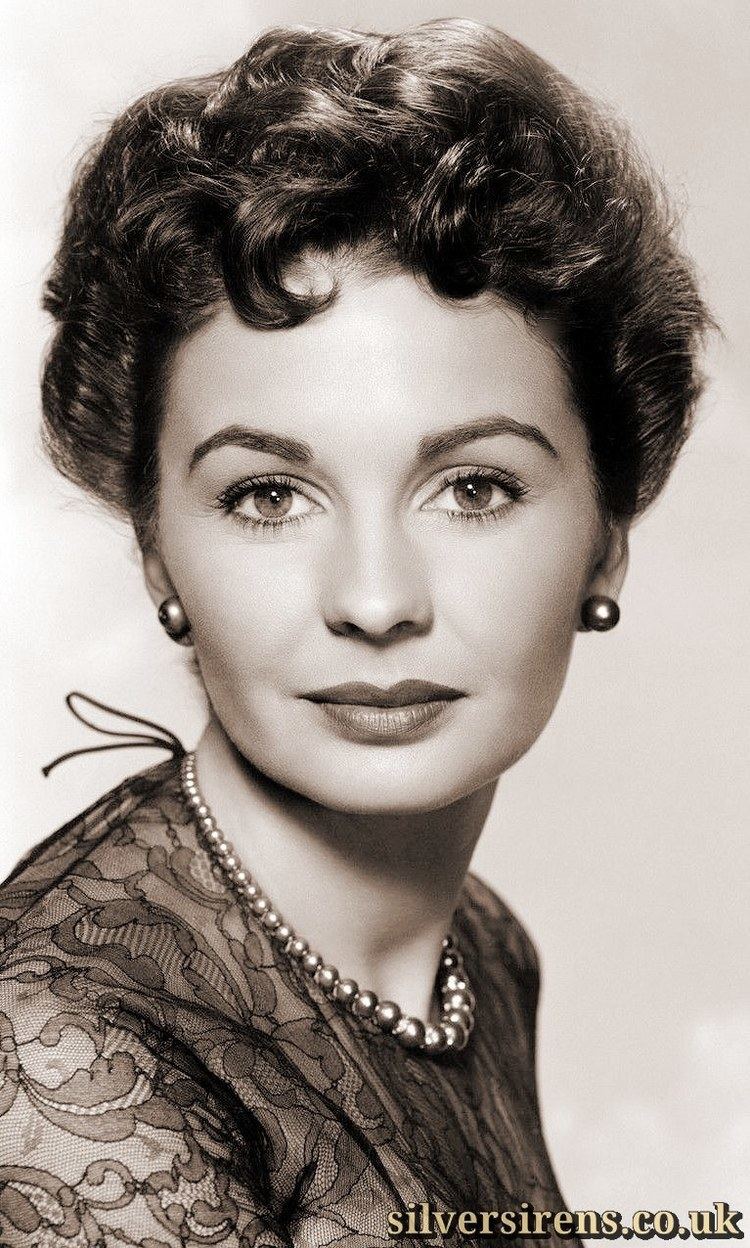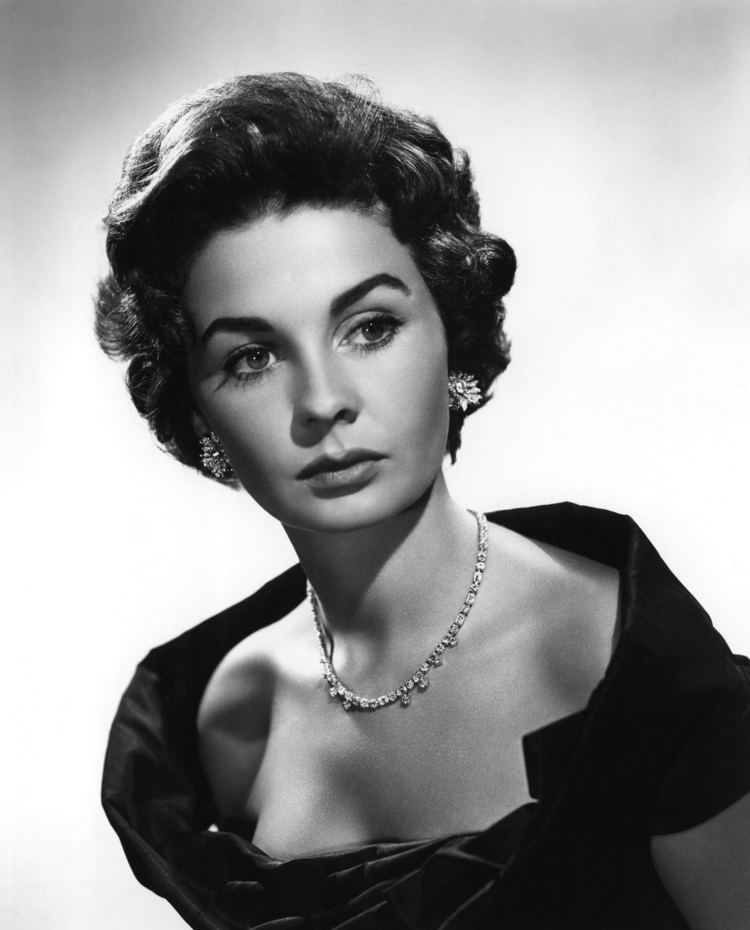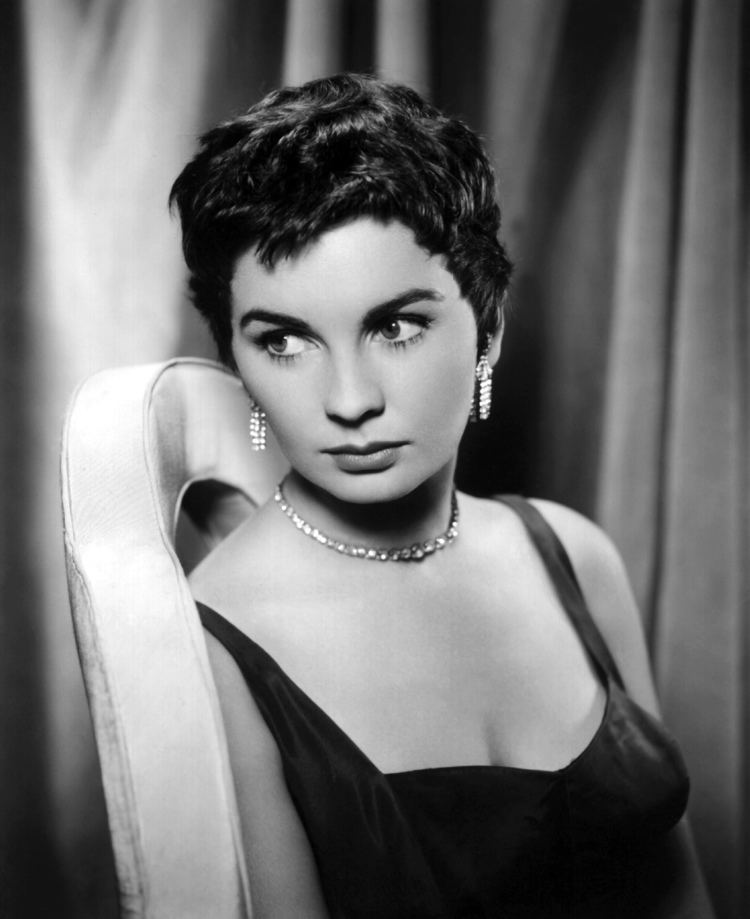Cause of death Lung cancer Role Actress Name Jean Simmons | Years active 1944–2009 Nationality British-American Height 1.68 m | |
 | ||
Full Name Jean Merilyn Simmons Born 31 January 1929 ( 1929-01-31 ) Lower Holloway, London, England, UK Alma mater Aida Foster School of Dance Occupation Actress, singer, dancer Parent(s) Charles SimmonsWinifred Loveland Simmons Children Tracy Granger, Kate Brooks Movies Spartacus, Guys and Dolls, Hamlet, The Big Country, Elmer Gantry Similar People | ||
Jean simmons dies at 80 years
Jean Merilyn Simmons, OBE (31 January 1929 – 22 January 2010) was an English American actress and singer. One of J. Arthur Rank's "well-spoken young starlets", she appeared predominantly in films, beginning with those made in Great Britain during and after the Second World War, followed mainly by Hollywood films from 1950 onwards.
Contents
- Jean simmons dies at 80 years
- Jean simmons 1946
- Early life and career
- Personal life
- Death
- Release
- Box office ranking
- Filmography
- References

Simmons was nominated for the Academy Award for Best Supporting Actress for Hamlet (1948), and won a Golden Globe Award for Best Actress for Guys and Dolls (1955). Other notable film appearances included Young Bess (1953), The Robe (1953), Elmer Gantry (1960), Spartacus (1960), and the 1969 film The Happy Ending, for which she was nominated for the Academy Award for Best Actress. She also won an Emmy Award for the 1983 miniseries The Thorn Birds.

Jean simmons 1946
Early life and career

Simmons was born in Lower Holloway, London, to Charles Simmons, a bronze medallist in gymnastics at the 1912 Summer Olympics and his wife, Winifred (née Loveland) Simmons. Jean was the youngest of four children with siblings Lorna, Harold and Edna. She began acting at the age of 14. During the Second World War, the Simmons family was evacuated to Winscombe, Somerset. Her father, a physical education teacher, taught briefly at Sidcot School, and some time during this period Simmons followed her eldest sister onto the village stage and sang songs such as "Daddy Wouldn't Buy Me a Bow Wow". Returning to London and just enrolled at the Aida Foster School of Dance, Simmons was spotted by the director Val Guest, who cast her in the Margaret Lockwood vehicle Give Us the Moon.

Small roles in several other films followed including the high-profile Caesar and Cleopatra, produced by Gabriel Pascal. Pascal saw potential in Simmons and in 1945 he signed her to a seven-year contract. Prior to moving to Hollywood, she played the young Estella in David Lean's version of Great Expectations (1946) and Ophelia in Laurence Olivier's Hamlet (1948), for which she received her first Oscar nomination. She played an Indian girl in the Powell-Pressburger film Black Narcissus (1947).
It was the experience of working on Great Expectations that caused her to pursue an acting career more seriously:
I thought acting was just a lark, meeting all those exciting movie stars, and getting £5 a day which was lovely because we needed the money. But I figured I'd just go off and get married and have children like my mother. It was working with David Lean that convinced me to go on.
Playing Ophelia to Olivier's Hamlet made her a star while still in her teens, although she was already well known for her work in other British films, including her first starring role in the film adaptation of Uncle Silas, and Black Narcissus (both 1947). Olivier offered her the chance to work and study at the Bristol Old Vic, advising her to play anything they threw at her to get experience; she was under contract to the Rank Organisation who vetoed the idea. In 1949 Simmons starred with Stewart Granger in Adam and Evelyne. In 1950 she was voted the fourth most popular star in Britain. In 1951 Rank sold her contract to Howard Hughes, who then owned the RKO Pictures.
In 1950 she married Stewart Granger, with whom she appeared in several films, and the transition to an American career began. She made four films for Hughes, including Angel Face, directed by Otto Preminger. According to David Thomson "if she had made only one film – Angel Face – she might now be spoken of with the awe given to Louise Brooks." A court case freed her from the contract with Hughes in 1952.
In 1953 she starred alongside Spencer Tracy in The Actress, a film that was one of her personal favourites. Among the many films she appeared in during this period were The Robe (1953), Young Bess (1953), Désirée (1954), The Egyptian (1954), Guys and Dolls (1955), The Big Country (1958), Elmer Gantry (1960), (directed by her second husband, Richard Brooks), Spartacus (1960), All the Way Home (1963) and The Happy Ending (1969), for which she received her second Oscar nomination. In the opinion of film critic Philip French, Home Before Dark (1958) saw her give '"perhaps her finest performance as a housewife driven into a breakdown in Mervyn LeRoy's psychodrama".
By the 1970s Simmons turned her focus to stage and television acting. She toured the United States in Stephen Sondheim's A Little Night Music, then took the show to London, and thus originated the role of Desirée Armfeldt in the West End. Performing in the show for three years, she said she never tired of Sondheim's music; "No matter how tired or off you felt, the music would just pick you up."
She portrayed Fiona "Fee" Cleary, the Cleary family matriarch, in the 1983 miniseries The Thorn Birds; she won an Emmy Award for her role. In 1985-86 she appeared in North and South, again playing the role of the family matriarch as Clarissa Main. In 1988 she starred in The Dawning with Anthony Hopkins and Hugh Grant, and in 1989 she appeared in a remake of Great Expectations, in which she played the role of Miss Havisham, Estella's adoptive mother.
She made a late career appearance in the Star Trek: The Next Generation episode "The Drumhead" (1991) as a retired Starfleet admiral and hardened legal investigator who conducts a witch-hunt. In 1991 she appeared as matriarch Elizabeth Collins Stoddard and her ancestor Naomi Collins in the short-lived revival of the 1960s daytime series Dark Shadows, in roles originally played by Joan Bennett. From 1994 until 1998 Simmons narrated the A&E documentary television series, Mysteries of the Bible. In 2004 Simmons voiced the lead role of Sophie in the English dub of Howl's Moving Castle.
Personal life
Simmons was married and divorced twice. She married Stewart Granger in Tucson, Arizona, on 20 December 1950. In 1956 she and Granger became U.S. citizens; in the same year, their daughter, Tracy Granger, was born. The couple divorced in 1960.
On 1 November 1960, Simmons married director Richard Brooks; their daughter, Kate Brooks, was born a year later in 1961. Simmons and Brooks divorced in 1980. Although both men were significantly older than Simmons, she denied she was looking for a father figure. Her father had died when she was just 16 but she said: "They were really nothing like my father at all. My father was a gentle, softly-spoken man. My husbands were much noisier and much more opinionated ... it's really nothing to do with age ... it's to do with what's there – the twinkle and sense of humour." And in a 1984 interview, given in Copenhagen at the time she was shooting the film Yellow Pages, she elaborated slightly on her marriages, stating,
It may be simplistic, but you could sum up my two marriages by saying that, when I wanted to be a wife, Jimmy (Stewart Granger) would say: "I just want you to be pretty." And when I wanted to cook, Richard would say: "Forget the cooking. You've been trained to act – so act!" Most people thought I was helpless – a clinger and a butterfly – during my first marriage. It was Richard Brooks who saw what was wrong and tried to make me stand on my own two feet. I'd whine: 'I'm afraid.' And he'd say: 'Never be afraid to fail. Every time you get up in the morning, you are ahead.'
She had two daughters, Tracy Granger (who has worked as a film editor since 1990), and Kate Brooks (a TV production assistant and producer), one by each marriage – their names bearing witness to Simmons' friendship with Spencer Tracy and Katharine Hepburn. Simmons moved to the east coast of the US in the late 1970s, briefly owning a home in New Milford, Connecticut. Later she returned to California, settling in Santa Monica, where she lived until her death.
Death
She died from lung cancer at her home on 22 January 2010, nine days before her 81st birthday, surrounded by her family.
Release
Throughout her life Simmons spoke out publicly about her struggle with addiction, and in 2003 became the patron of the British drugs and human rights charity Release. In 2005 she signed a petition to the British Prime Minister Tony Blair asking him not to upgrade cannabis from a class C drug to a class B.
Box office ranking
For a number of years, British film exhibitors voted her among the top ten British stars at the box office via an annual poll in the Motion Picture Herald.
